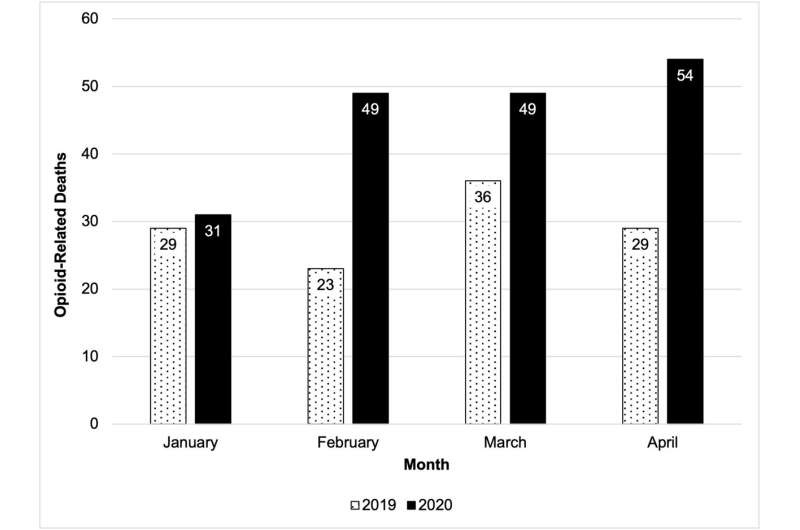Opioid-related deaths increased among less-educated whites following LA County's stay-at-home order

Many communities were already struggling to combat the ongoing opioid epidemic when the COVID-19 pandemic swept across the country in the spring of 2020. A new study led by researchers at the USC Schaeffer Center for Health Policy & Economics and the LA County Medical Examiner-Coroner's Office investigates whether the stay-at-home orders impacted opioid-related fatal overdoses.
The researchers find stay-at-home orders implemented in Los Angeles County during March and April of 2020 were associated with increased opioid-related deaths among whites, while opioid-related deaths among Black, Asian and Hispanic individuals decreased.
"We were surprised to find the demographics of those who suffered a fatal overdose shifted significantly as the pandemic unfolded," said researcher Jason Doctor, a Senior Fellow at the USC Schaeffer Center for Health Policy & Economics. Doctor's previous research on opioids led to changes in prescribing practices.
The study appears in Drug and Alcohol Dependence.
Opioid-related deaths mirror other self-inflicted behavioral trends
Doctor and his colleagues analyzed data from the L.A. County Medical Examiner-Coroner's Office between January 2019 and July 2020. The researchers focused on the change in the number of opioid-related deaths from February 2020 to the end of April 2020, a timeframe which includes the implementation of stay-at-home orders.
In total, there were 152 opioid-related deaths from February to the end of April of 2020. In comparison, there were 88 opioid-related deaths during the same period in 2019. In 95% of cases in 2020, illicit opioid use (heroin or fentanyl) was a contributing cause of death.
"The start of the pandemic occurred while we saw fentanyl infiltrating the west coast," said Doctor, who co-directs the behavioral science program at the USC Schaeffer Center and is an associate professor at the Price School of Public Policy. "It was a challenging confluence of events which we are finding had devastating outcomes for some communities."
The people who died were mostly white males residing in areas where a smaller share of the adult population has a bachelor's degree.
"Our findings suggest that COVID-19 and the stay-at-home orders impacted opioid-related behaviors differently across communities. While fatal opioid-related overdoses increased overall in 2020 compared to 2019, this trend was mostly due to a significant increase among whites," said Marcella Kelley, predoctoral fellow at Schaeffer Center.
The findings mirror troubling trends among middle-aged white Americans across the country who live in areas where few people hold bachelor's degrees.
Black, Asian and Hispanic individuals faced higher rates of unemployment and made-up larger percentages of COVID-19 deaths. Yet despite these challenges, the researchers did not see an increase in opioid-related deaths among these groups.
Stay-at-home orders may have limited access to support groups
A decrease in face-to-face treatment like Narcotic Anonymous immediately following the stay-at-home orders may have contributed to the increase in opioid-related deaths among white Americans, the researchers said.
Additionally, medication-assisted treatment for opioid use disorders may require clinic-based administration of methadone or 30-day appointments or refills of buprenorphine. The researchers said that a lack of access to prescription opioids may have resulted in illicit opioid use.
"Although there are many factors, the decline in face-to-face encounters with medical providers may have contributed to opioid-related deaths increasing," said Jonathan Lucas, Chief Medical Examiner-Coroner for LA County. "If this is an underlying cause, clinical policy should focus on ways to remove these barriers, so people are not cut off from important services."
More information: Marcella A. Kelley et al, Opioid-related deaths before and after COVID-19 stay-at-home orders in Los Angeles County, Drug and Alcohol Dependence (2021). DOI: 10.1016/j.drugalcdep.2021.109028

















